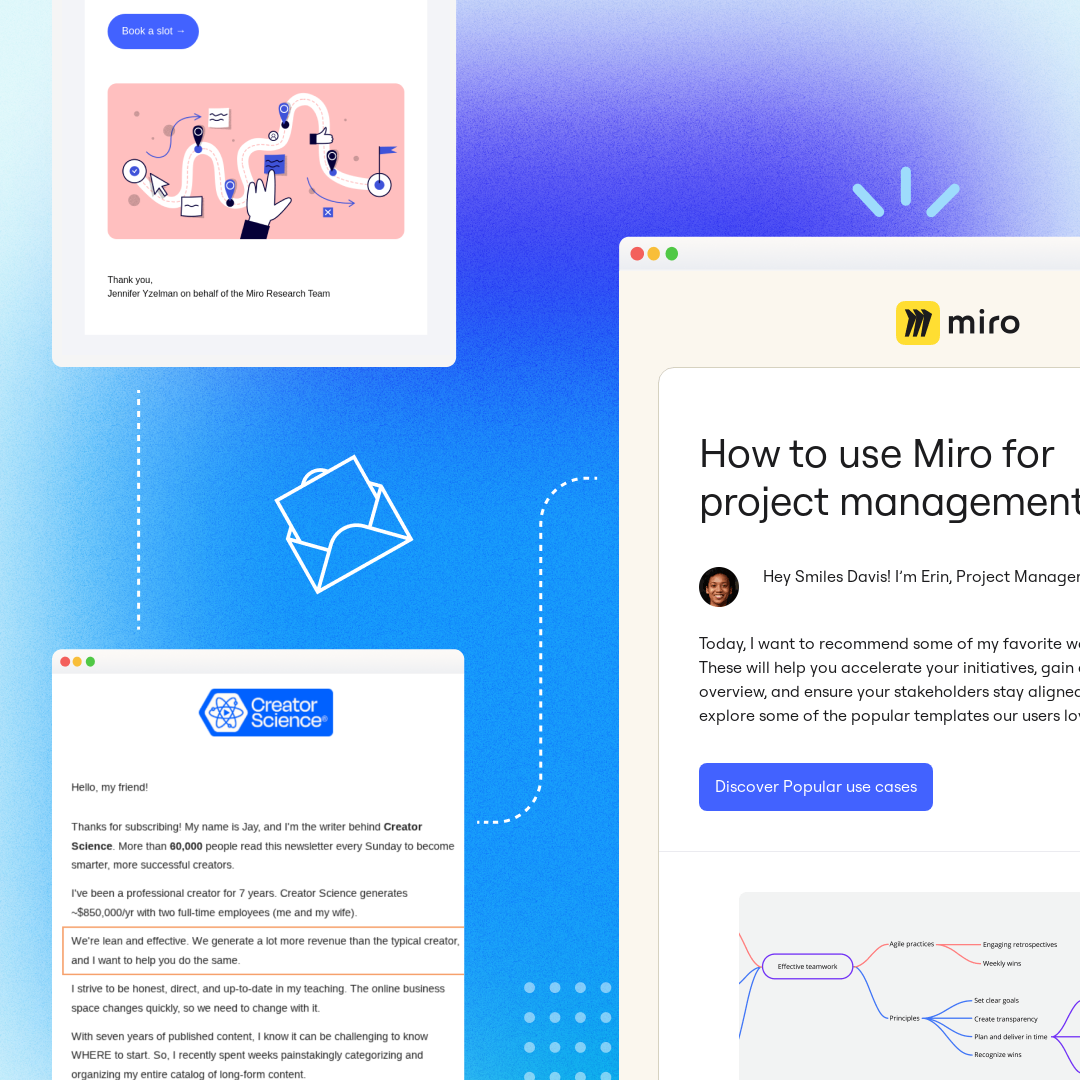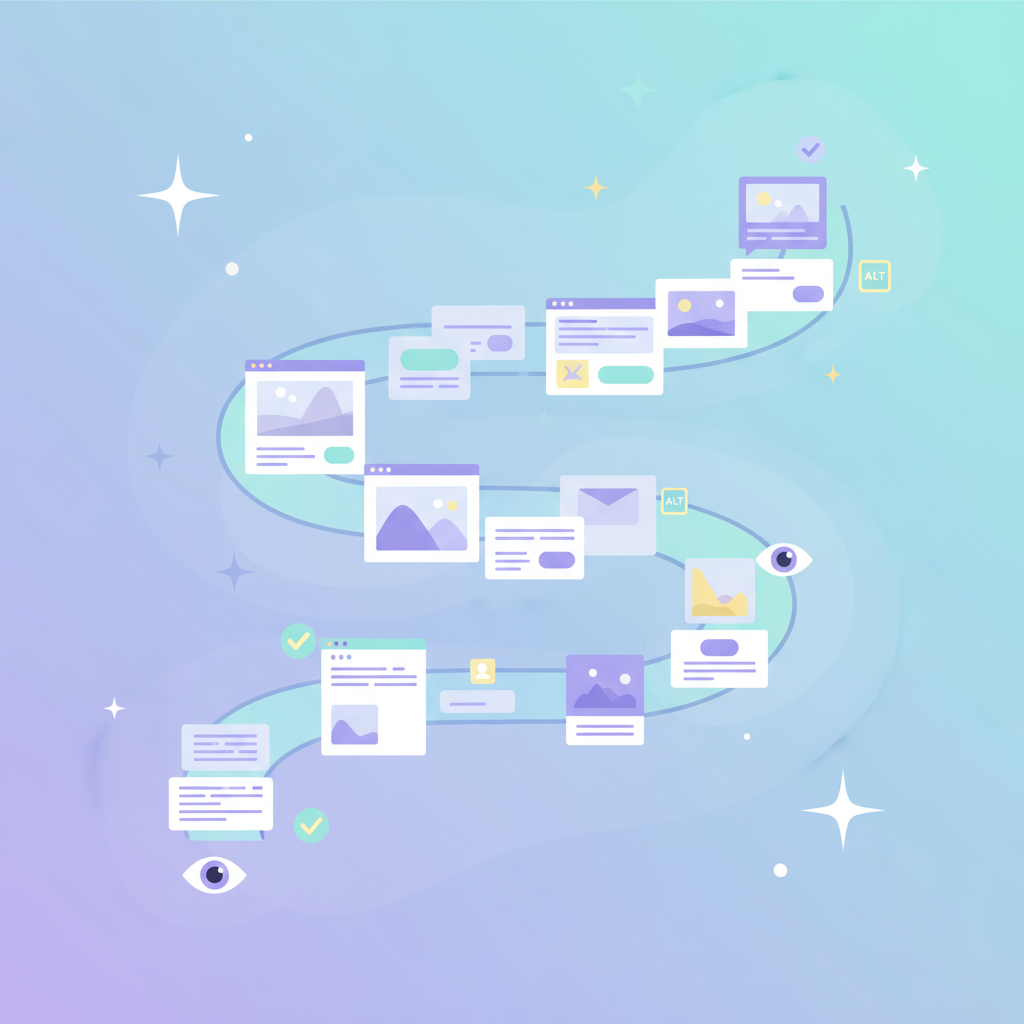
Email personalization is a must-have email marketing technique. It's a strategy thatpresents readers with relevant contentbased on their behavior. Email personalization is also a great way to cut through the noise—and it's effective. In fact,emailpersonalizationcan increase open and click-through rates, boost interaction, and generate revenue. Refresh your approach to personalized emailsby taking a look at how some brands do it best.
Take the opportunity to get personal.
Mostpersonalized emails are automated based on user behavior. Companies typically track "behavior" is to see how someone is using their product. For instance,Twitter tracks who each user is following in order to offer a list of similar users to follow.It all comes down to data. When you have information about readers' locations, interests, shopping histories, activities, and more, you can use that information to offer personalized content triggered by those user activities.Campaigns that often benefit from personalization include:
- Re-engagement emails
- Abandoned cart/registration emails
- Up-sell or cross-sell campaigns
Let's take a look at these strong brand examples.
1. Spotify: Concert recommendations based on location + listening habits
Spotify, the music-listening app, uses two key pieces of data to engageusers: location and listening habits. With that simple formula, the brand can offer concert suggestions. The headline in the resulting email says it all: Upcoming concerts near you by artists you love.

When it comes to design, Spotify keeps it simple. Each module includes the artist name and image, along with the date and location of the concert. The simplicity means readers immediately see the relevant info in the email as soon as it's opened. A style like this is also a great opportunity to experiment withlive-text overlay on images, which ensures the email isn't comprised only of images.
2. Rover: Local 5-star sitter suggestions based on location
Rover, the dog-sitting app, uses email personalization to prompt readers to use its platform. In a location-driven, New York-centric email, Rover presents readers with reviews of local sitters.

A location-based header illustration pairs well with the text-driven email, and the CTA buttons are easy-to-spot and well-placed. The brand also uses my dog's name in the subject line of marketing emails, a smart and simple way to personalize day-to-day content:

3. Lyft: Special deals based on ride behavior
After I recently usedLyft in Minneapolis, the brand sent a personalized email with a 20% off coupon that was specific to the location.

Lyft's Deal of the Week may also be triggered by user inactivity (I used the app in Minneapolis a few times but then stopped) as well as the time of day usage (this deal is specific for evening rides). Together, the data can be funneled into an automated email that can easily be customized for different locations.However, Lyft can make its images look crisper by optimizing them for mobile screens. Here's our tutorial on how to make sure beautiful designs are never blurry.
4. Brooklinen: Discounts based on cart abandonment
Brooklinen, the bedding company, recently sent a two-email campaign triggered by shopping activity. Specifically, I put a sheet set in my cart, then closed the browser. Within days, I received a series of follow-up emails about the items in my cart—along with a fewdiscounts.

Here's one of the first emails that offered free shipping:

Since I didn't respond to this message, a second email was triggered the following day with a similar deal: $15 off. When the purchase still wasn't completed, a final reminder email was sent. Instead of sending just a single cart abandonment message, Brooklinen uses reader activity/inactivity to continue triggering personalized messages.
5. Airbnb: Activities or homes based on browse or booking activity
Once a user books a trip on Airbnb, the company takes the opportunity to present relevant "experiences" that correspond with the date of your trip.

The message uses numbers to create urgency. The header indicates there are 19,000 people traveling and only 6 events with seats left. It's a great use of data!But, Airbnb doesn't just track what you've already booked; the brand has an eye on what you've browsed, too. Here's an email that supplies personalized suggestions for where to stay, based on the city the reader browsed.

The five-star ratings are a particularly compelling and wise inclusion.
6. Paperless Post: Invitation Reminder based on Annual Activity
Paperless Post, the invitation platform, keeps a record of your invitations. Create one for a birthday, and guess what—the brand is smart enough to send an automated emaila year later to remind you to plan the next party.

7. SoulCycle: Customer retention based on class attendance
Sometimes, a little personalization goes a long way. SoulCycle has created a simple follow-up email that's automatically sent to participants after their first class. It's nothing fancy, but it's thoughtful and encouraging—and it just might be the thing to keep clients going back.

Soulcycle can still improve its design. Instead of all the "click here" text, the company should add some eye-catching CTA buttons, along with spot illustrations to accompany each bullet.
Wrap Up: Get started with email personalization!
The Takeaway: Send personalized, automated emails that impress and connect with your audience. And, remember these tips:
- Collect data! You can't use it if you don't have it: dates, locations, activity/inactivity, browser or shopping history, etc.
- Start personalizing with re-engagement, abandoned cart/registration, or up-sell campaigns.
- Personalize subject lines, but don't stop there!
- Try an automated campaign, instead of a one-off email.
- Incorporate star ratings to seal the deal.
- Keep it simple and engage readers after an event.
Feeling inspired? Design your next personalized email campaign in our easy-to-use, drag-n-drop BEE editor. No HTML knowledge is required, plus your email will be mobile responsive. Sign-up for a BEE Pro free trial!



